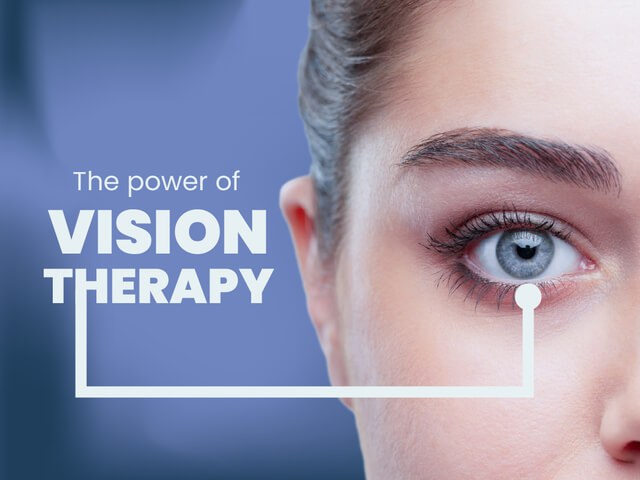
The complexities of the visual system often demand innovative approaches to address persistent visual difficulties. Dr. Wylie, an esteemed eye care specialist, shares an insightful anecdote that sheds light on the transformative impact of visual therapy, highlighting the effectiveness of a seemingly simple solution in mitigating post-concussion symptoms.
Understanding Visual Processing
Visual processing is a complex cognitive function that involves the brain's ability to interpret and comprehend visual information. A concussion can significantly disrupt an individual's visual processing, leading to difficulty maintaining focus, increased light sensitivity, and feelings of pressure or unease. Minor imbalances in the visual system can sometimes compound these issues, necessitating a targeted therapeutic approach to restore visual equilibrium.
The brain's ability to process visual information relies on the intricate coordination between the eyes and the visual cortex. Any disruption in this intricate process can result in various visual disturbances, impacting an individual's overall perception of the surrounding environment. Post-concussion, these disturbances can manifest in diverse ways, significantly impeding daily activities and inducing discomfort.
A Journey to Recovery: The Power of Minor Interventions
Dr. Wylie recounts a recent encounter with a patient grappling with persistent visual difficulties following a concussion and cervical fracture. The patient's symptoms included challenges in reading, heightened light sensitivity, and an overarching sensation of unease. Upon careful examination, Dr. Wylie identified subtle imbalances within the patient's visual system, including a minor midline shift and vertical eye misalignment.
In a remarkable turn of events, Dr. Wylie applied a simple yet effective intervention — 1/8 inch wide scotch tape strategically placed on the patient's spectacle lenses. Almost immediately, the patient experienced a notable improvement in vision and a remarkable alleviation of the pressure in his head. Rechecking the midline shift with the tape in place revealed a remarkable absence of the previously observed shift, underscoring the transformative potential of even the most seemingly minor visual therapy interventions.
Harnessing the insights from this patient success story, Dr. Wylie emphasizes the pivotal role of visual therapy in restoring visual balance and improving overall well-being. Through personalized therapeutic approaches, individuals can regain their visual equilibrium and experience a significant enhancement in their quality of life.
The Role of Visual Therapy in Concussion Recovery
Concussions can significantly impact an individual's visual health, leading to persistent visual difficulties and discomfort. Visual therapy is vital in aiding concussion recovery by addressing the underlying visual disturbances and restoring optimal visual function.
By targeting specific visual imbalances and employing tailored therapeutic interventions, eye care specialists can help individuals navigate the challenges posed by post-concussion visual disturbances. Through comprehensive evaluations and personalized treatment plans, patients can benefit from improved visual processing, enhanced visual comfort, and a notable reduction in associated symptoms.
Dr. Wylie's patient success story serves as a poignant reminder of the transformative potential of visual therapy in concussion recovery, emphasizing the need for specialized interventions to optimize visual health and overall well-being.
The Science of Visual Processing: Exploring the Intricacies
Visual processing encompasses intricate neural processes that enable the brain to interpret and make sense of visual stimuli. In post-concussion visual disturbances, disruptions in these neural pathways can lead to various symptoms, including challenges with focusing, light sensitivity, and a persistent sense of unease.
The visual cortex, a specialized brain region responsible for processing visual information, is critical in translating optical signals into meaningful perceptions. Any disruption in transmitting these signals can result in visual difficulties, impacting an individual's daily activities and overall quality of life.
Visual therapy interventions aim to address these disruptions by targeting specific visual imbalances and facilitating the restoration of optimal visual processing. Individuals can enhance their optical resilience and regain their visual comfort by engaging in targeted exercises and interventions, contributing to a comprehensive recovery following a concussion.
Personalized Approaches to Visual Therapy: Empowering Recovery
Dr. Wylie's patient success story underscores the significance of personalized visual therapy approaches in facilitating post-concussion recovery. By tailoring therapeutic interventions to address specific visual imbalances, eye care doctors can effectively empower patients to navigate the challenges posed by post-concussion visual disturbances.
Through comprehensive evaluations and individualized treatment plans, patients can benefit from a holistic approach to visual therapy, enhancing visual function and overall well-being. The integration of specialized techniques and targeted interventions allows individuals to regain their visual equilibrium and experience a notable improvement in their daily visual experiences.
Are you struggling with complex visual difficulties? Experience the transformative power of personalized visual therapy at Advanced Eyecare & Therapies, tailored to address your specific needs and empower your journey toward optimal visual recovery. Schedule your consultation today and take the first step toward regaining visual comfort and clarity.
